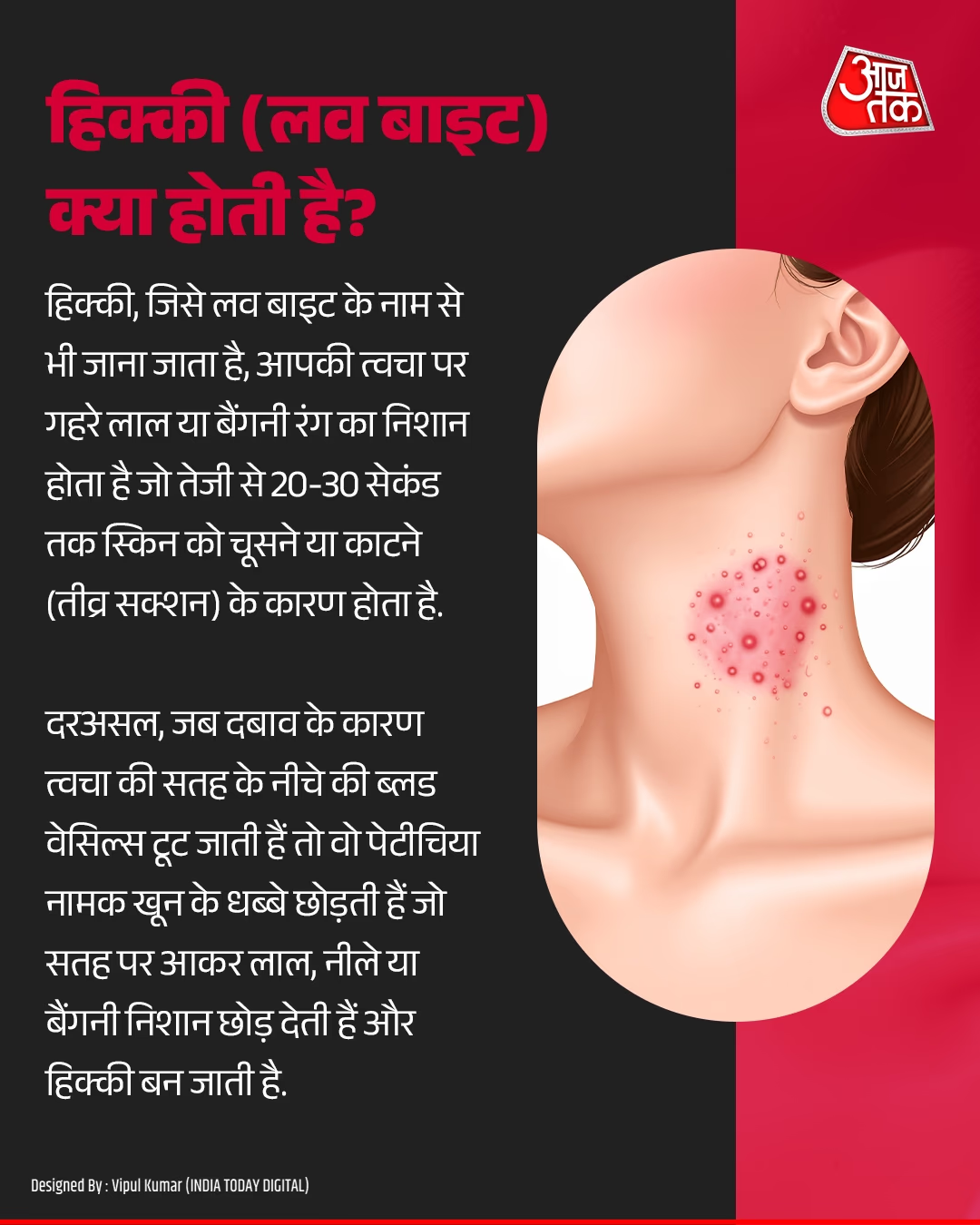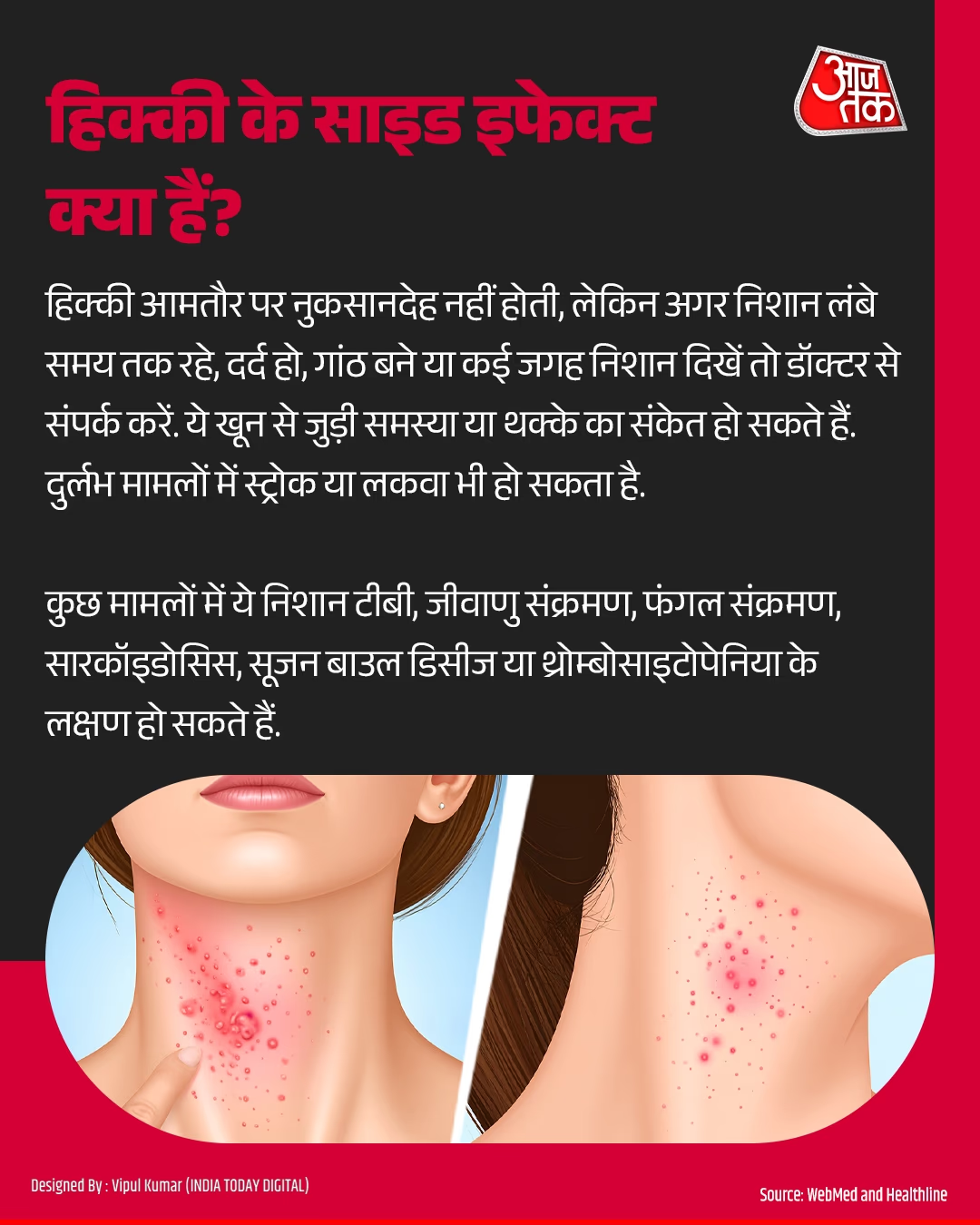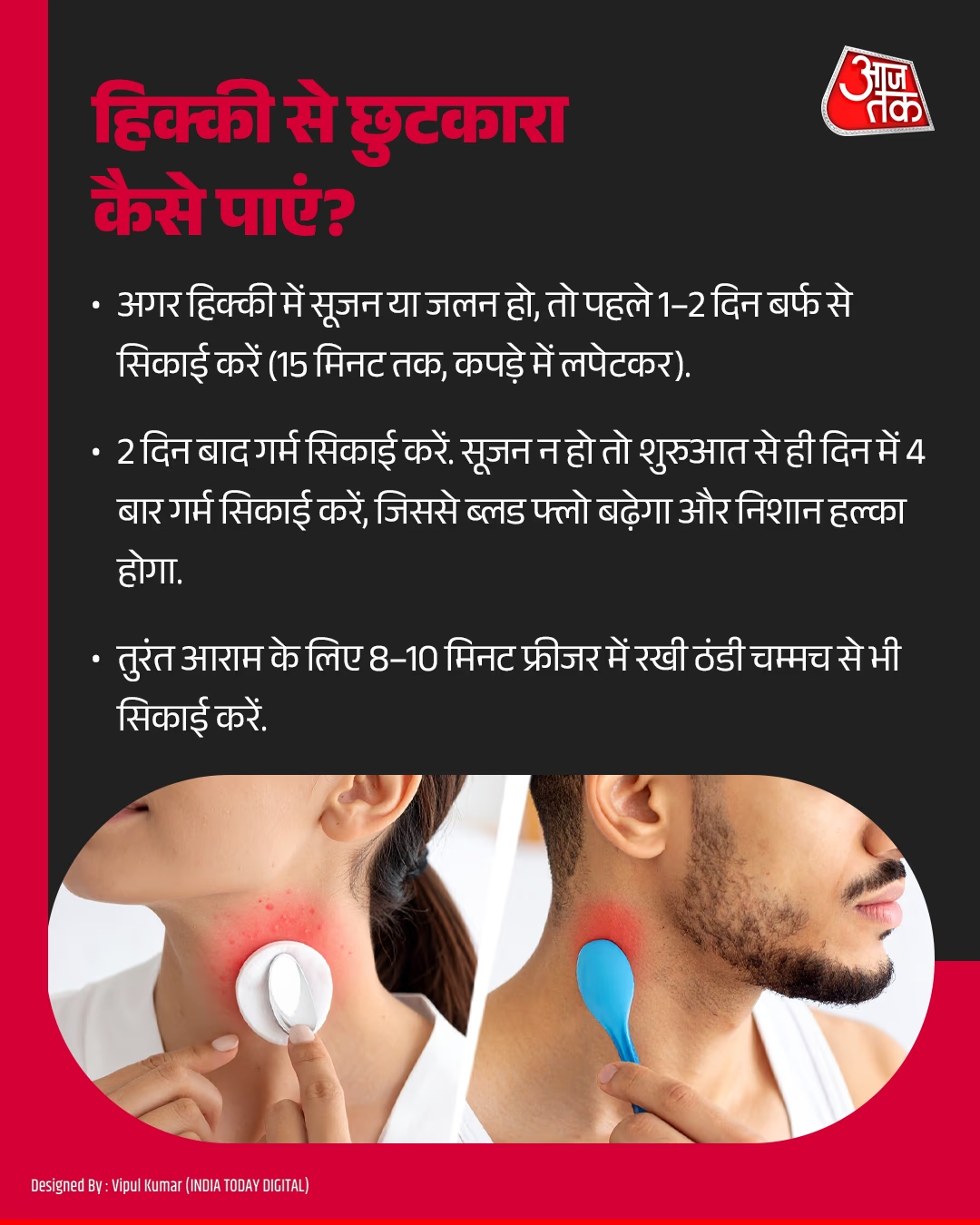Hickey or Love Bite:
Often symbolizing a moment of passion, a love bite, or hickey, is more than just a mark on the skin. While giving a hickey is common in affectionate relationships, it's crucial to understand the potential health implications. Yes, love bites can lead to blood clot formation, skin discoloration, swelling, and even more severe issues like strokes. It's essential for everyone to be informed about these potential risks. Let's delve into this topic further...

Source: aajtak
A hickey, also known as a love bite, appears as a deep red or purple mark on the skin caused by intense suction during an intimate moment, lasting about 20 or 30 seconds. The mark results from clotted blood, as small blood vessels under the skin break under pressure, leaving behind red, blue, or purple spots. Medically, these can be referred to as:
Ecchymosis
Erythema
Hematoma
Purpura
Petechiae
Blood vessels don't only burst from hickeys but can also break from hitting hard objects, causing painful or red and blue marks on the skin.
It's noteworthy that individuals on blood-thinning medications such as aspirin or anticoagulants may bruise easily, manifesting hickey-like marks with minimal pressure.
Initially, a hickey resembles a scratch. As blood collects beneath the skin, it transforms from red to purple, slowly fading to yellow over 10-12 days.
Dr. Nitin Kumar N, a neurologist and senior consultant at Bangalore's Sparsh Hospital, explained to Aajtak.in, 'When couples engage in foreplay, the intense pressure during a neck kiss can result in red and blue marks, known as hickeys. While typically harmless, recent reports of complications underscore the importance of awareness about potential problems arising from these love bites.'
'There are three primary concerns associated with love bites. First, carotid sinus syndrome. The neck harbors a group of nerve cells that can be stimulated by love bites, potentially affecting the heart rate and blood pressure, causing dizziness or fainting and other complications.'
'Second, if a clot is already present in the neck vessels, excessive pressure from a love bite can displace the clot towards the brain, potentially leading to a stroke.'
'Third, during an intense kiss on the neck, fragile blood vessels might rupture, allowing clots and blood to escape. Therefore, it's vital to be cautious, especially in sensitive areas.'
In 2011, after receiving a hickey, a New Zealand woman experienced paralysis when an emergency doctor discovered a blood clot in her brain. Similarly, a Danish woman, aged 35, suffered weakness on her right side 12 hours post-hickey due to stroke.
According to
, a stroke following a hickey is rare. The carotid artery runs along the neck, essential for supplying blood to the brain, face, and neck. Excessive pressure on this artery during a hickey can cause clot formation or displacement, increasing stroke risk, notably if pre-existing arterial issues exist, as seen in the New Zealand and Danish women.

Source: aajtak
suggests that while hickeys often aren't problematic, if a mark persists, causes pain, forms a lump, or if multiple hickeys appear, consulting a doctor is wise. It could indicate hematological issues or clotting disorders. Severe injuries like strokes have occurred, albeit rarely, post-hickey.
Hickeys, resembling blue or black marks, can sometimes signal conditions like erythema nodosum, potentially caused by:
Tuberculosis
Bacterial infection
Fungal infection
Sarcoidosis
Inflammatory bowel disease
Thrombocytopenia
While these conditions share symptoms with hickeys, they shouldn't be confused, as true hickeys result from brief moments, whereas serious health issues present many accompanying symptoms.
Similar to other bruises, hickeys take about 3 days to 2-3 weeks to heal as the injury beneath the skin fades over time, gradually changing color.
First Day:
Blood pooling below the skin appears as a red clot.
One to Two Days:
As hemoglobin, the iron-bearing protein in blood changes, the mark turns blue, purple, or black.
Five to Ten Days:
The color may turn green or yellow.
Tenth to Fourteenth Day:
The mark becomes yellow, brown, or light brown, slowly fading.
Eventually, the hickey vanishes, skin returning to normal.

Source: aajtak
Hickeys rapidly become visible, with marks appearing within 5 to 10 minutes, depending on the duration and pressure applied to the skin. The longer and harder the pressure, the more pronounced the bruise.
If swelling and burning are present initially, applying ice for the first couple of days can alleviate discomfort. Wrap ice in fabric and gently apply it to the skin for about 15 minutes. After two days, switch to heat application four times daily to enhance blood flow, reducing mark visibility. If pain persists, consider over-the-counter medications like acetaminophen, guided by a physician.
A simple trick: chill a spoon in the freezer for eight to ten minutes, then gently rub it over the hickey; this quick remedy can provide comfort.
Visible neck hickeys can cause embarrassment, especially if others notice. For concealment, try using makeup, high-neck shirts or tops, scarves, or high-collar shirts to hide them.




